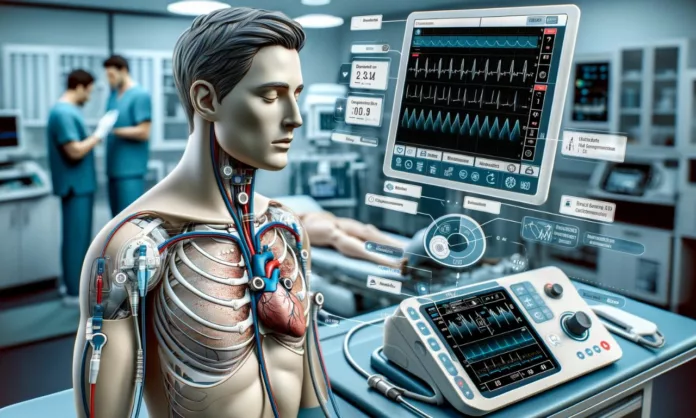Chest compression feedback devices are crucial tools in cardiopulmonary resuscitation (CPR), designed to monitor and provide real-time guidance for effective chest compressions. These devices play a vital role in improving CPR quality and, consequently, survival chances during cardiac arrest scenarios. Let’s explore the functionalities and benefits of these devices in detail.
Table of Contents
Monitoring Parameters of Chest Compression Feedback Devices
Chest compression feedback devices measure various critical parameters during CPR to ensure effective chest compressions:
- Compression Depth: They assess the depth of each chest compression, providing feedback on whether it is sufficient for effective circulation.
- Compression Rate: The devices monitor the rate of chest compressions, aiming for the recommended range of 100 to 120 compressions per minute.
- Full Recoil: These devices ensure the proper technique is used, allowing the chest to fully recoil between compressions for adequate chest expansion.
- Compression Fraction: This metric evaluates the time proportion spent performing chest compressions during CPR, crucial for maintaining effective circulation.
Feedback Mechanisms
Chest compression feedback devices offer both audio and visual feedback:
- Audio Feedback: Includes a metronome-like feature guiding rescuers to achieve the recommended compression rate.
- Visual Feedback: Involves LED lights or display screens showing real-time feedback on compression depth and rate.
Training and Educational Value
These devices also function as training tools during CPR training, simulating scenarios and offering feedback to improve learners’ chest compression techniques.
Technological Evolution and Methods
The evolution of these devices has seen various methods and technologies:
- Early Mechanical Devices: Initial devices used force or pressure sensors to measure compression depth, but faced limitations due to the variability in chest wall elasticity.
- Accelerometer-Based Systems: Modern devices often rely on accelerometry, processing chest acceleration in real-time to estimate compression depth. However, integrating acceleration signals to derive chest displacement is challenging due to error accumulation.
- Spectral Analysis Method: This method, based on the spectral analysis of chest acceleration, has shown promise due to its accuracy in various conditions, such as on soft surfaces or in moving vehicles.
- Transthoracic Impedance (TI) Signal: Some devices utilize the TI signal from defibrillation pads to provide feedback, particularly effective in estimating compression rate.
Overall Benefits
The use of chest compression feedback devices enhances CPR quality through improved compression depth and rate, boosts rescuer confidence, especially for those with limited experience, and contributes to better outcomes in terms of survival rates. Their development reflects an ongoing effort to improve CPR performance, both in clinical settings and in public response scenarios. These devices not only guide rescuers during actual resuscitation attempts but also play a significant role in training and education, ensuring that both professionals and laypeople are better equipped to perform effective CPR.

